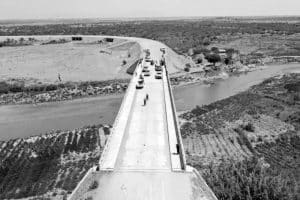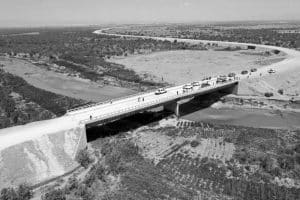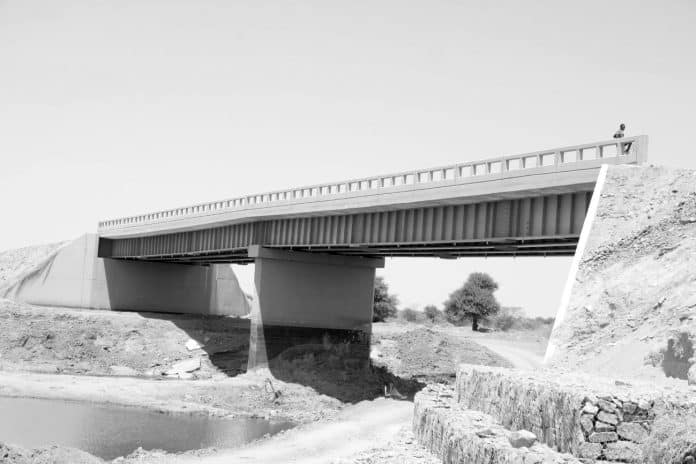Introduction to the Sibiti Bridge Project
The Sibiti Bridge project is a remarkable feat of engineering that is transforming the landscape of Tanzania’s remote regions. This ambitious infrastructure endeavor aims to connect communities that have long been isolated, providing them with improved access to essential services, economic opportunities, and social connections.
The Sibiti Bridge spans the Sibiti River, a vital waterway that has historically posed a significant challenge for residents and travelers alike. For years, the river’s treacherous currents and lack of reliable crossing points have hindered the movement of people, goods, and services, hampering the development of these remote areas. However, the construction of the Sibiti Bridge is now changing the game, offering a safe and efficient solution to this longstanding problem.
Importance of the Sibiti Bridge in Connecting Remote Regions
The Sibiti Bridge is more than just a physical structure; it is a lifeline for the people living in the surrounding areas. By bridging the gap between these remote regions and the rest of the country, the project is unlocking a wealth of opportunities for economic growth, social integration, and improved access to essential services.
Prior to the bridge’s construction, residents of these remote communities faced significant challenges in reaching hospitals, schools, and markets. The arduous journey across the river, often requiring dangerous ferries or lengthy detours, made it difficult for them to access essential services and participate fully in the regional economy. The Sibiti Bridge has changed all that, providing a reliable and efficient means of transportation that has transformed the lives of the people living in these once-isolated areas.
Challenges Faced in Constructing the Sibiti Bridge

The construction of the Sibiti Bridge was no easy feat. The remote location, rugged terrain, and unpredictable weather conditions posed significant challenges for the engineering team responsible for the project. Transporting heavy machinery and materials to the construction site was a logistical nightmare, requiring the coordination of multiple modes of transportation and the cooperation of local communities.
Additionally, the Sibiti River itself presented a formidable obstacle, with its strong currents and shifting water levels. The team had to meticulously plan and execute the bridge’s design to ensure its structural integrity and safety, while also minimizing the impact on the surrounding environment.
Despite these challenges, the dedication and ingenuity of the engineering team, coupled with the support of local stakeholders, enabled the successful completion of the Sibiti Bridge. The project serves as a testament to the power of perseverance, innovation, and collaboration in overcoming seemingly insurmountable obstacles.
Engineering and Design of the Sibiti Bridge
The Sibiti Bridge is a marvel of modern engineering, designed to withstand the unique challenges of its environment. The bridge’s structure is a combination of reinforced concrete and steel, engineered to provide maximum strength and stability while also ensuring a smooth and safe passage for vehicles and pedestrians.
One of the key features of the Sibiti Bridge is its innovative design, which takes into account the fluctuating water levels of the Sibiti River. The bridge’s foundations are built to adapt to these changes, ensuring that the structure remains secure and functional even during periods of high or low water flow.
The bridge’s deck is also designed with safety in mind, featuring a wide and well-lit surface that allows for the smooth flow of traffic. The inclusion of pedestrian walkways on both sides of the bridge further enhances the overall user experience, making it accessible and convenient for both motorists and residents.
Impact of the Sibiti Bridge on Local Communities and Economy
The Sibiti Bridge has had a transformative impact on the local communities it serves. By providing a reliable and efficient means of transportation, the bridge has opened up new economic opportunities for residents, enabling them to access markets, seek employment, and engage in trade more easily.
The improved connectivity has also had a positive impact on the delivery of essential services, such as healthcare and education. Residents can now reach hospitals and schools in a fraction of the time it would have taken before the bridge’s construction, ensuring that they have access to the resources they need to thrive.
Moreover, the Sibiti Bridge has fostered greater social integration, allowing residents to connect with their neighbors and participate more fully in the regional and national fabric. The increased mobility has enabled the exchange of ideas, the sharing of cultural traditions, and the strengthening of community ties, all of which contribute to the overall well-being and development of the region.
Future Plans for the Sibiti Bridge Project
The Sibiti Bridge project is not just a one-time endeavor; it is part of a larger vision for the development of Tanzania’s remote regions. The government and its partners have outlined ambitious plans to expand and enhance the bridge’s capabilities, ensuring that it continues to serve the needs of the local communities for years to come.
One of the key priorities is the integration of the Sibiti Bridge into a broader transportation network, connecting it to other vital infrastructure projects across the country. This will further enhance the bridge’s impact, allowing residents to access a wider range of services and economic opportunities.
Additionally, there are plans to incorporate sustainable and eco-friendly features into the bridge’s design and operation, such as the installation of renewable energy sources and the implementation of environmentally-conscious maintenance practices. These initiatives will not only reduce the bridge’s carbon footprint but also serve as a model for sustainable infrastructure development in the region.
Success Stories and Testimonials from Those Benefiting from the Sibiti Bridge
The Sibiti Bridge has already transformed the lives of countless individuals living in the surrounding communities. From small business owners to healthcare professionals, the bridge has enabled them to access new opportunities and improve their quality of life.
One such success story is that of Fatima, a local farmer who now has a direct and efficient route to the nearest market town. Before the bridge’s construction, Fatima would have to navigate the treacherous river crossing, often losing a significant portion of her produce due to the long and arduous journey. Now, she can easily transport her goods to the market, earning a better income and supporting her family.
Another inspiring story comes from Amina, a nursing student who can now commute to her university in a fraction of the time it used to take. “The Sibiti Bridge has been a game-changer for me,” Amina says. “I no longer have to worry about the risks of crossing the river, and I can focus on my studies and building a better future for myself and my community.”
These are just a few examples of the countless individuals who have benefited from the Sibiti Bridge project. Their stories serve as a testament to the profound impact that this infrastructure development has had on the lives of those living in Tanzania’s remote regions.
Sustainability and Environmental Considerations of the Sibiti Bridge

The Sibiti Bridge project has been designed with sustainability and environmental preservation in mind. The engineering team has worked diligently to minimize the impact of the bridge’s construction and operation on the surrounding ecosystem, ensuring that the local communities can continue to thrive in harmony with their natural environment.
One of the key sustainability measures implemented in the project is the use of eco-friendly materials and construction techniques. The bridge’s foundations and structures have been designed to blend seamlessly with the landscape, reducing the visual and physical impact on the environment. Additionally, the team has incorporated renewable energy sources, such as solar panels, to power the bridge’s lighting and maintenance operations, further reducing its carbon footprint.
The Sibiti Bridge project has also prioritized the preservation of the Sibiti River’s delicate ecosystem. The bridge’s design features specialized structures that allow for the unimpeded movement of aquatic life, ensuring that the local flora and fauna can continue to thrive. Furthermore, the team has implemented comprehensive waste management and environmental monitoring systems to ensure that the bridge’s operations do not disrupt the fragile balance of the surrounding ecosystem.
Conclusion: The Significance of the Sibiti Bridge in Tanzania’s Development
The Sibiti Bridge is more than just a physical structure; it is a symbol of Tanzania’s commitment to the development and integration of its remote regions. This ambitious infrastructure project has the power to transform the lives of countless individuals, opening up new opportunities for economic growth, social connectivity, and improved access to essential services.
By bridging the gap between these once-isolated communities and the wider national landscape, the Sibiti Bridge is paving the way for a more equitable and prosperous future for all Tanzanians. The project’s success serves as a model for similar infrastructure initiatives across the country, demonstrating the transformative potential of strategic investments in connectivity and mobility.
As Tanzania continues to strive for inclusive and sustainable development, the Sibiti Bridge stands as a shining example of what can be achieved when vision, determination, and innovation come together. This remarkable feat of engineering is not just a bridge; it is a symbol of Tanzania’s unwavering commitment to the empowerment and progress of its people.
For more information on infrastructure click here!

































